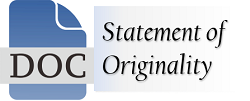Evaluasi Partisipasi Guru Dalam Pemanfaatan Platform Merdeka Mengajar (PMM) Untuk Meningkatkan Mutu Sekolah SMA Ibnu Hajar Boarding School Depok
DOI:
https://doi.org/10.31599/4nphnz46Kata Kunci:
Evaluation, Merdeka Mengajar Platform, School Quality, Teacher ParticipationAbstrak
The Merdeka Mengajar Platform (PMM) is a digital platform that provides various learning menus for teachers and school principals in teaching, learning and creating. This research aims to analyze how teachers' participation is evaluated in utilizing PMM to improve school quality at SMA Ibnu Hajar Boarding School Depok. The evaluation model used is the CIPP model (Context, Input, Process, Product). The research method used in this research is qualitative research with case studies. The data collection technique uses four methods, namely observation, interviews, questionnaires, and documentation. The results of the research are: (1) Based on the evaluation of teacher participation in the use of PMM, it is known that the obstacles are that there has been no training regarding this matter, lack of time during working hours to maximize the use of PMM, the steps involved in the process are many and long, time constraints, so that the busy teaching and learning schedule means that study time / access to content via PMM can only be done during free time at home. (2) Follow-up to the results of the evaluation of teacher participation in the use of PMM, namely the need to hold regular training on PMM, ensure adequate technological infrastructure, including a stable internet connection, provide special time for teachers to maximize competency improvement by attending various trainings in PMM whose topics can be adapted to the needs of each teacher, form a learning community, provide support and appreciation for teachers who have contributed to improving education reports by actively optimizing PMM.
Unduhan
Referensi
Aji, R. H. S., & Putra, M. H. I. (2021). Role Model Implementasi Kurikulum Merdeka Belajar Kampus Merdeka Pada Program Studi Non-Agama. SALAM: Jurnal Sosial Dan Budaya Syar-I, 8(6), 2001–2010. https://doi.org/10.15408/sjsbs.v8i6.23821
Arikunto, S. (2011). Prosedur Penelitian Suatu Pendekatan praktek. Rineka Cipta, Jakarta.
Aulia, D., Murni, I., & Desyandri, D. (2023). Peningkatan Kompetensi Guru Sekolah Dasar melalui Platform Merdeka Mengajar (PMM). Jurnal Ilmiah Profesi Pendidikan, 8(1b), 800–807. https://doi.org/10.29303/jipp.v8i1b.1310
Ambawani, C. S. L., Maryani, D., Cholidah, N., Sumardi, S., & Muhibbin, M. (2024). Evaluasi dan Tindak Lanjut Pemanfaatan Platform Merdeka Mengajar (PMM). Journal of Education Research, 5(2), 2121–2128. https://doi.org/10.37985/jer.v5i2.1010
Aulia, D., Murni, I., & Desyandri, D. (2023). Peningkatan Kompetensi Guru Sekolah Dasar melalui Platform Merdeka Mengajar (PMM). Jurnal Ilmiah Profesi Pendidikan, 8(1b), 800–807. https://doi.org/10.29303/jipp.v8i1b.1310
Lisvian Sari, A. S., Cicik Pramesti, Suryanti, & Riki Suliana R.S. (2022). Sosialisasi Platform Merdeka Mengajar Sebagai Wadah Belajar Dan Berkreasi Guru. Jurnal Penamas Adi Buana, 6(01), 63–72. https://doi.org/10.36456/penamas.vol6.no01.a6105
Morissan, dkk. (2017). Metode Penelitian Survei. Kencana, Jakarta.
Ambawani, C. S. L., Maryani, D., Cholidah, N., Sumardi, S., & Muhibbin, M. (2024). Evaluasi dan Tindak Lanjut Pemanfaatan Platform Merdeka Mengajar (PMM). Journal of Education Research, 5(2), 2121–2128. https://doi.org/10.37985/jer.v5i2.1010
Aulia, D., Murni, I., & Desyandri, D. (2023). Peningkatan Kompetensi Guru Sekolah Dasar melalui Platform Merdeka Mengajar (PMM). Jurnal Ilmiah Profesi Pendidikan, 8(1b), 800–807. https://doi.org/10.29303/jipp.v8i1b.1310
Sugiyono. (2017). Metode Penelitian Kuantitatif, kualitatif, dan R&D. Bandung: Alfabeta, CV.
Sutama. (2019). Metode Penelitian Pendidikan (Kuantitatif, Kualitatif, PTK, Mix Method, R&D). Sukoharjo: CV.Jasmine.
Wijayanti, N. I., Yulianti, R., & Wijaya, B. (2019). Evaluasi Program Pendidikan Pemakai Dengan Model CIPP di Perpustakaan Fakultas Teknik UGM. Tik Ilmeu : Jurnal Ilmu Perpustakaan Dan Informasi, 3(1), 37. https://doi.org/10.29240/tik.v3i1.790











_-_Copy1.jpg)




